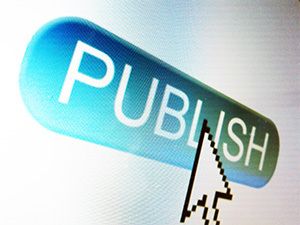A book cover is more than just decoration; it is your book’s most powerful marketing tool, a silent salesperson that has a fraction of a second to grab a reader’s attention in a crowded marketplace, whether on a physical shelf or a digital screen. A truly eye-catching Mindstir Media cover must be professional, genre-appropriate, and instantly intriguing.
Here is a guide to designing a cover that not only attracts the eye but also compels the reader to pick up your book.
1. Know Your Reader and Your Genre
The first rule of successful cover design is that it must speak the correct visual language to your target audience.
- Genre Conventions are Key: Every genre—from romance and thriller to sci-fi and non-fiction—has established visual tropes. Readers of a specific genre look for these cues to quickly identify a book they might enjoy.
- Mystery/Thriller: Often use dark, high-contrast colours, sharp typography, and evocative, sometimes shadowy, imagery.
- Romance: Typically feature warmer colours, softer or more elegant fonts, and imagery focused on characters or intimate moments.
- Fantasy/Sci-Fi: Tend to employ epic landscapes, vibrant or metallic colour palettes, and stylized, often custom, typography.
- Non-Fiction/Business: Generally favour clean, minimalist designs, bold sans-serif fonts, and a focus on one central, clear concept
- The “Blink Test”: Your cover should communicate your book’s genre and mood in a single, quick glance. If a reader is confused about what kind of book they’re looking at, they will likely move on.
2. Prioritize Simplicity and Visual Impact
In the age of online retail, your cover will often be viewed as a tiny thumbnail. Clutter is the enemy of impact.
- One Focal Point: Choose one strong, central element—an image, a compelling piece of typography, or a bold graphic—and make that the star of your design. All other elements should support it.
- Embrace Negative Space: The empty or “white” space around your title and image allows the key elements to breathe and stand out. A sparse, well-composed design looks more professional and is easier to process quickly.
- Design for the Thumbnail: Always check your design scaled down to the size of a digital thumbnail. If the title is illegible or the main image is lost in the details, the design needs to be simplified.
3. Typography: The Title Must Pop
Typography is arguably the most critical element, especially for ebooks, where the title must be instantly readable.
- Legibility First: The font you choose for your title must be clear and readable at a small size. Avoid overly ornate or heavily stylized fonts that turn into an illegible blur when scaled down.
- Use Contrast: Create a strong contrast between the text colour and the background. This is essential for legibility. You can achieve this with a bold, contrasting colour or by using a subtle drop-shadow or outline on the text.
- Mind the Hierarchy: The book title should be the most prominent text element. The author’s name, subtitle, and any taglines should be progressively smaller to guide the reader’s eye. Use no more than two or three complementary fonts to keep the design cohesive and professional.
4. Leverage Color and Mood
Color is a powerful psychological tool that sets the emotional tone of your book before a single word is read.
- Color Psychology: Research the emotional associations of different colours. Deep blues and greens often convey calm or mystery, while reds and yellows are energetic and attention-grabbing.
- Create Contrast: Use colour contrast to make your key elements stand out. A light title on a dark background, or a splash of vibrant colour against a muted palette, can create an immediate, arresting effect.
- Color Scheme: Stick to a limited, intentional color palette—ideally three main colors and one or two accents—to maintain harmony and avoid a chaotic, amateur look.
5. Ensure Quality and Professionalism
A cover that looks amateurish is the fastest way to turn away a potential reader.
- High-Resolution Imagery: Never use low-resolution, blurry, or pixelated images. All imagery must be professional-grade and appropriately licensed.
- Avoid Common Pitfalls:
- Stretching/Distorting Images: Maintain the original aspect ratio of your graphics and photos.
- Too Many Elements: Resist the urge to include every key character, setting, or plot point on the cover. A hint is more intriguing than a summary.
- Bad Kerning or Spacing: Pay attention to the spacing between letters, words, and all design elements. A professional design looks meticulously spaced.
An eye-catching book cover is a carefully balanced piece of graphic design. By prioritizing genre conventions, focusing on a single, compelling focal point, and ensuring impeccable legibility, you can create a cover that not only stands out but also convinces the right reader that your book is exactly what they have been looking for.


